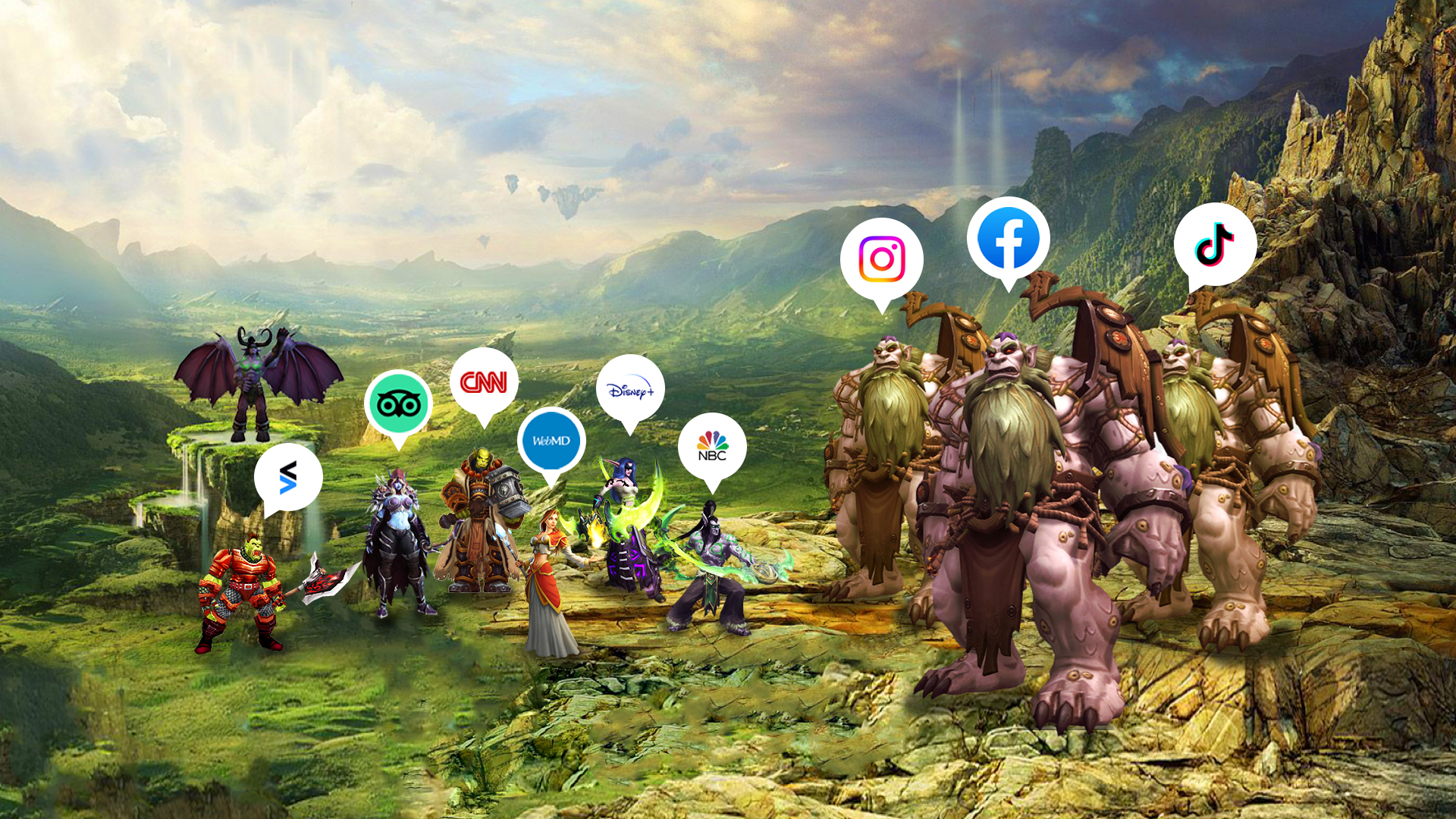Content Engagement Metrics to Watch
January 2023

One of the biggest advantages that our clients receive from the Content Engagement Unit at Insticator is the ability to track key metrics that drive traffic, time, and revenue on your published website. While one of the primary goals of publishing ads is to ensure that your content drives action, the only way to accurately measure and interpret that action is through the right content engagement metrics.
For many publishers, this is easier said than done. If you are stuck trying to manually track your content engagement metrics across spreadsheets and self-made dashboards, you might find yourself stuck between a rock and a hard place with no room for upward growth. Instead of honing in on one or two factors that tell you a little bit about their performance, there are several significant content engagement metrics that you should be tracking on a consistent basis.
Today, our Insticator experts are going to highlight five of the biggest metrics to measure engagement consistently across the board, helping you find ways to track whether or not your content engagement units are in alignment with your website’s growth and revenue goals. Hopefully, it’ll also answer the question: How can you ensure your content drives action?
1. Average Time Spent on Page
A great metric to start measuring is the average amount of time each user spends on your page. This might go without saying, but one of the biggest goals of your site should be to drive up traffic. And the more time people spend looking around at the content on your side, the more engaging your content is – and the more ad revenue you will earn because of it.
Like most content engagement metrics, there is no magic number that your company should strive to reach. Instead, you should determine average traffic movements in your niche to see whether or not your potential customers are spending enough time on your site.
As an example, the Contentsquare 2022 Digital Experience Benchmark Report showed that the average time spent on a website page – across all industries – is about 54 seconds. That does not mean that 54 seconds is the optimal amount of time that your audience should be spending on your site, but it can help set a placeholder goal for publishers who are just getting started with their own content engagement plans.
2. Bounce Rate
Similar to the average time spent on the page, the average bounce rate measures how many people visit your website and then exit before looking at more than one page. If too many people are coming and going without giving your site a chance, your traffic and revenue can take a nosedive. How can you ensure your content drives action when users aren’t staying long enough to explore the more engaging parts of your site?
Interactive ads may offer the solution to your high bounce rate metrics. But contrary to popular belief, a high bounce rate isn’t actually always a bad thing. If the bounce rate is consistent across all of the pages on your site, then that could be an indication that users are finding exactly what they need without having to look around your site for too long. However, it could also mean that you are losing out on some key opportunities for engagement. It’s important to gain a deeper understanding of the amount of time you want your users to be spending on your site before setting up ads.
3. Pageviews
One of the biggest content engagement metrics you should be looking at is your pageviews. Simply put, pageviews show you how much traffic you have on each individual page. While this might seem like too broad a metric to accurately track, there are plenty of major advantages to keeping this high on your list. Tracking pageviews is specifically helpful when you combine this metric with more specific data points you are looking to track, such as those that track engagements closely.
High pageviews can be good, but not at the expense of other metrics. If your pageveiws are up but your average time spent on the page is down, you might need to tweak your content engagement efforts a bit. Content marketing has no single sure-fire solution that will make your metrics to measure engagement skyrocket overnight, but there are several proven methods of success that you can incorporate into your published website at any time with the help of our content engagement team.
4. Social Media Activity
Your website and its social media accounts should always be connected. Social media can become one of the most powerful channels through which you drive new traffic to your website. You need to know how to monitor social media activity – and monitor it the right way – in order to achieve proper content engagement metrics. Not to mention, social media is a great way to establish brand familiarity with old and new audiences. By building up this trust, you can raise the level of awareness you need to see massive growth in traffic, activity, pageviews, and more.
Different social media activity metrics can also tell you about the ways in which your potential audience members are engaging with the content you put out on your social media pages. Engagement can mean many different things, and engagement does not always produce conversions. Learn how your followers behave, what types of content they actually interact with, and how you can continue to turn those interested eyes toward your website.
5. Session Duration
Lastly, it’s important to look at how long each person is staying on your website as a whole. Regardless if they visit just one page or jump to many pages while they are on your site, gaining an understanding of the overall session duration can give you a lot more insight into what kinds of content engagement strategies are working and which ones aren’t.
You can pair session duration with the pages per session metric to see how much time is spent on each individual part of your site. It might be possible that users aren’t getting the information they need right away, causing them to travel around your site to no avail. These metrics to measure engagement might also reveal, on the other hand, that front-facing ads are working well on your homepage but are not drawing users into the heart of your site.
Why content engagement is important for publishers?
Better ad revenue by enabling features like ad refresh that refreshes ads on the user’s viewport after 30 seconds.
Attract more high-paying advertisers/sponsors by showing them your engagement metrics.
Highly engaged users are more likely to buy paid subscriptions which leads to you having an alternate source of income from your content.
Build Better Audiences with the Best Metrics to Measure Engagement
If you are tired of tweaking your ad campaigns and trying the millions of different content ad solutions out there while also measuring all of their resulting metrics on your own, it’s time to relieve yourself of that hassle. Insticator can help you serve data-enriched ads that track metrics the right way, freeing up your time to work on serving future ads that can really pack a punch, and hopefully the question “How can you ensure your content drives action?” has been answered. Get in touch with us today and learn more about our full ad management platform with custom solutions available at the touch of a finger.

Written by



